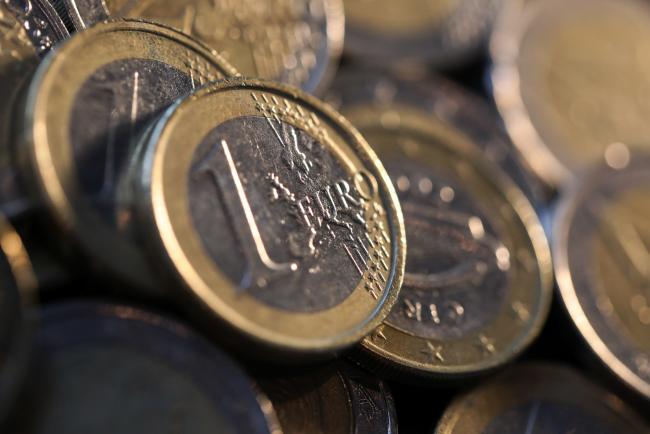(Bloomberg) -- The euro could revisit its year-to-date low as persistent political risks may lead Mario Draghi to refrain next week from painting a rosier picture for the bloc’s economy.
Market dynamics have shifted only slightly since the European Central Bank’s last meeting, yet not in a supportive way for the common currency. Data may be suggesting the forecasts for growth are broadly on track with the Governing Council’s projections, but on the other hand subdued inflation, early signs of contagion in peripheral bonds, deadlocked Brexit negotiations and a hawkish Federal Reserve could mean the euro could test its $1.1301 mid-August low.
Draghi said he sees a “relatively vigorous” pickup in underlying euro-area inflation following the September monetary policy decision and while wage pressure is building, the pass-through to prices is yet to be seen. At a time when the market looks behind the curve when it comes to additional U.S. tightening, there may be little room for the ECB president to downplay monetary policy divergence projections at the next gathering on Oct. 25.
Price action in the spot market this month showed that the euro could benefit from a Brexit resolution. U.K. and EU officials keep kicking the can down the road however as obstacles remain, with focus now turning to a December EU summit, as volatility shows. European Council President Donald Tusk and European Commission President Jean-Claude Juncker present conclusions from the Oct. 18-19 summit to the EU Parliament next week, with the bar high for a positive surprise.
For the short-term, investors are looking closely at the performance of euro-area peripheral bonds as the rift between Italy and the EU widens. Italy’s 10-year yield spread over Germany touched the highest in more than five years following a letter from the European Commission to Rome that said its spending plans were excessive. While resilience was the name of the game initially, Spanish bonds led the widening versus bunds on Thursday and the 10-year Portugal yield rose by 8 basis points Friday to 2.11 percent, highest since May.
The euro flirted with a two-month low Friday, hitting $1.1433, just one pip higher than its mid-August trough. Bloomberg’s fear-greed indicator shows bears are in firm control of price action, while a crossover in short-term moving averages suggests the latest rally for the dollar has legs to follow. On the weekly chart, a close below $1.1457 opens the room for a test of the $1.1300 handle.
Leveraged names may be short the euro already, yet model names are seen selling technical breaks, according to two traders in Europe, who asked not to be identified because they are not authorized to speak publicly. As the market looks short gamma below $1.1400, further weakness for the common currency could mean traders will need to chase the market lower. As long as the euro stays below its 55-daily moving average, currently at $1.1579, bulls will be kept on their toes.
What to Watch:
- German Chancellor Angela Merkel attends a campaign rally in Kassel next week; polls suggest the Christian Democratic Union is headed for a setback at Hesse state’s Oct. 28 vote
- Bank of Canada rate decision on Oct. 24; economists expect policy makers to raise rates; Governor Stephen Poloz to hold a press conference
- Policy makers’ speeches include Atlanta Fed President Raphael Bostic, Minneapolis Fed President Neel Kashkari, Cleveland Fed President Loretta Mester, Bank of England Governor Mark Carney and chief economist Andy Haldane
- Economic releases include euro-area consumer confidence and man. PMI; U.S. durable goods, PMI and GDP; see data calendar
- Amazon (NASDAQ:AMZN), Alphabet (NASDAQ:GOOGL), Twitter (NYSE:TWTR), UBS (NYSE:UBS), Barclays (LON:BARC), Ford (NYSE:F) among those posting earnings
